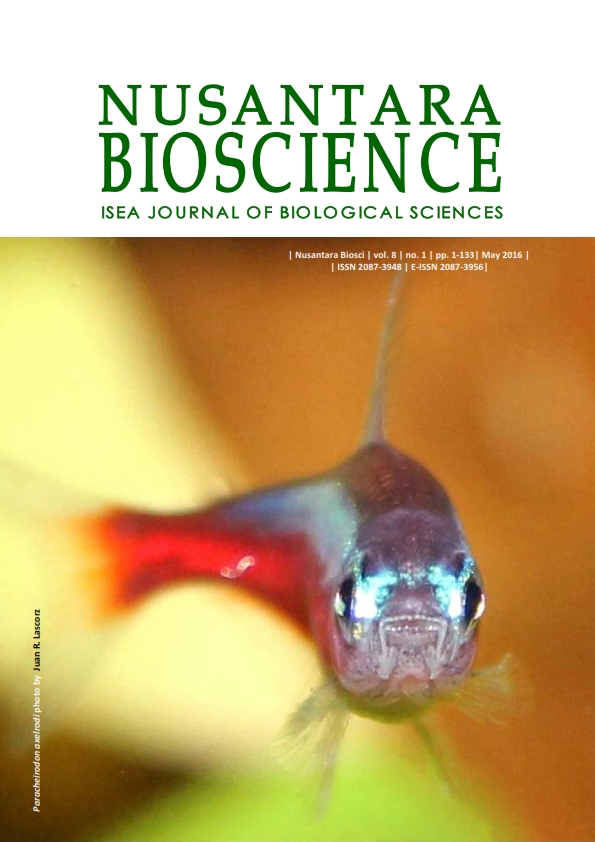Drought tolerance selection of soybean lines generated from somatic embryogenesis using osmotic stress simulation of polyethylene glycol (PEG)
##plugins.themes.bootstrap3.article.main##
Abstract
Abstract. Sunaryo W, Widoretno W, Nurhasanah, Sudarsono. 2016. Drought tolerance selection of soybean lines generated from somatic embryogenesis using osmotic stress simulation of polyethylene glycol (PEG). Nusantara Bioscience 8: 45-54. Somaclonal variation is an alternative source to create genetic variability including generating a novel character like drought tolerance. The objective of this research was to select the drought-tolerant lines derived from somatic embryogenesis (somaclones) of 4 soybean genotypes using drought stress simulated by Polyethylene Glycol (PEG). Soybean seeds (R1 generation) generated from 37 somaclones (R0 generation) were grown on semi-hydroponic system using Greenleaf as supporting medium. The seedlings were watered with half strength of liquid Murishage and Skoog nutrient. The PEG solution treatment of either 0% or 15% (PEG: w/v = -0.41 Mpa osmotic potential) was applied in the MS solution, from the seedlings of 14 days old until harvesting period. The vegetative growth, intensity of leaf firing, plant biomass, and drought sensitivity index variables were observed during the PEG application. The same procedure was applied to the seeds, propagated conventionally, from the same genotypes as controls. The results showed that somatic embryogenesis had altered the drought sensitivity of soybean genotypes under drought stress simulated by PEG. Interestingly, the different drought tolerance level was shown by the R1 plants. Some lines were increased and the other lines were decreased compared to the control genotypes. From a total of 185 R1 plants, 4 plants increased their tolerance against drought stress and grouped as tolerant genotype.
2019-01-01

